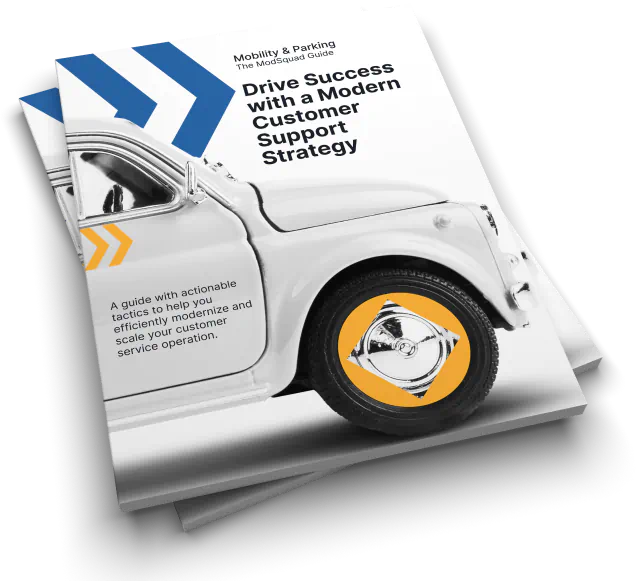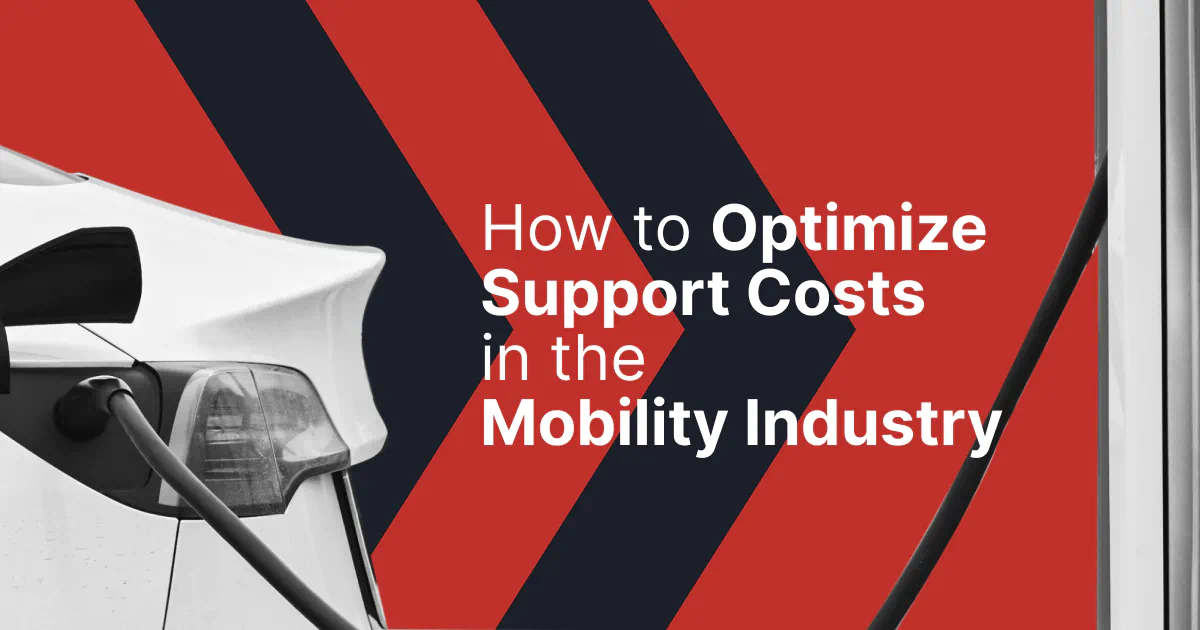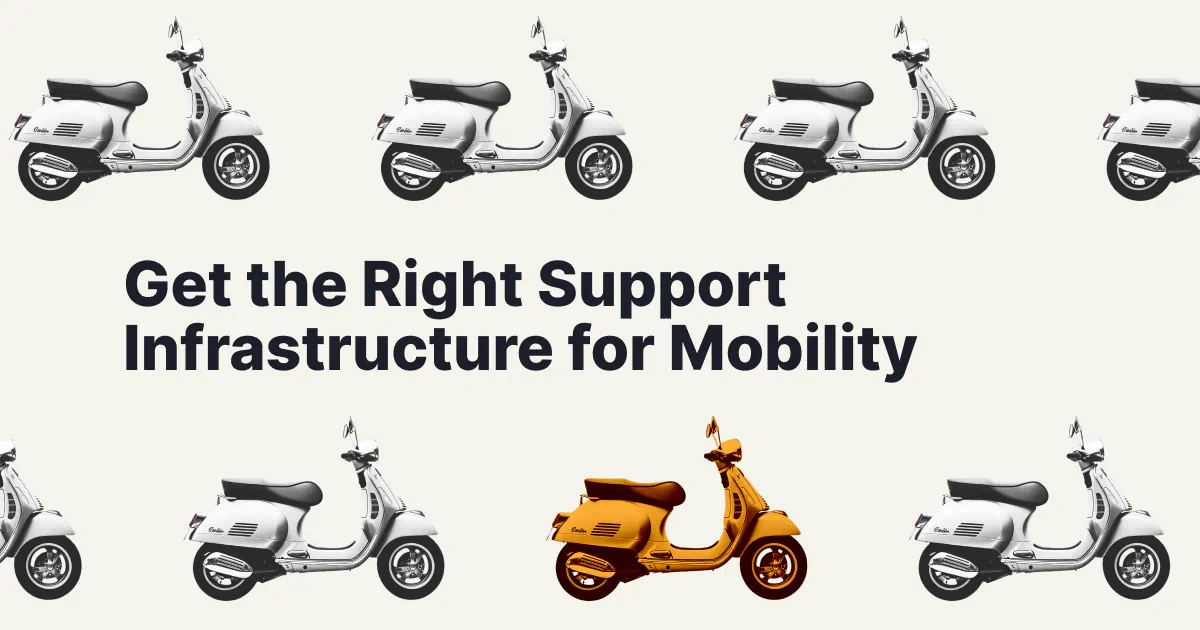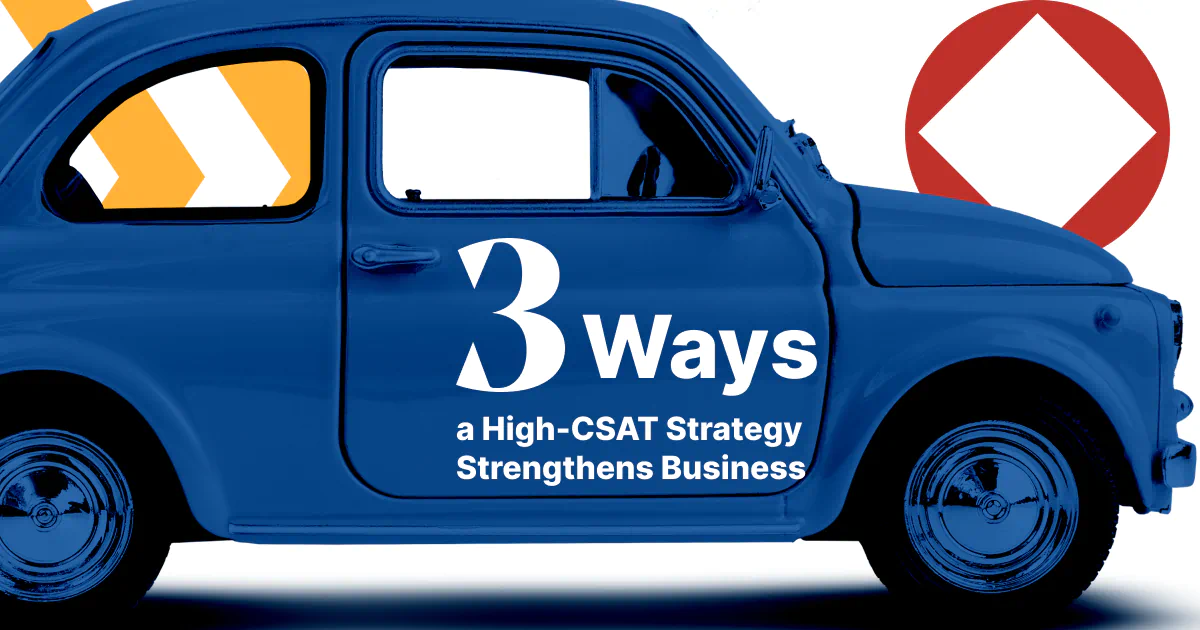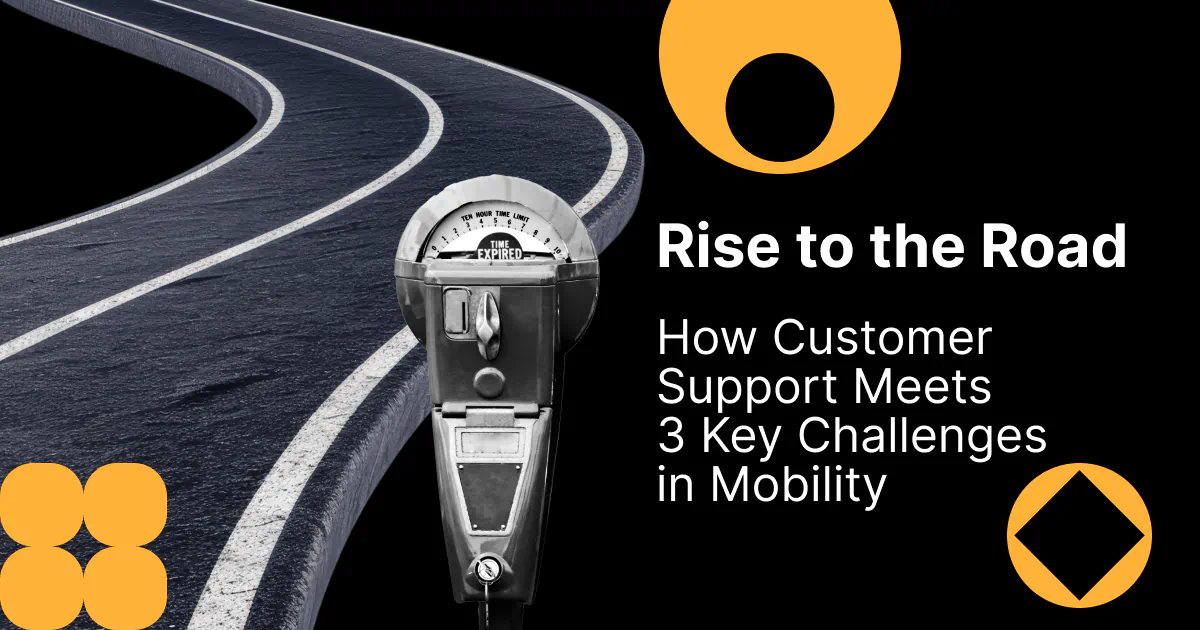
Rise to the Road: How Customer Support Meets Three Key Challenges in Mobility
Mobility services have changed a lot in the last decade. Before, the options were limited and easy to understand. You had a choice between driving yourself and parking, public transit, and your local taxi company. Things have gotten a lot more complicated since then.
A new ecosystem of transportation options has emerged. Whether it’s rideshares or bike rentals, customers have more options than ever, and they’re not just choosing based on price or location. Competition isn’t just a few blocks away anymore.
Today, the alternative is just a few quick taps away, waiting to be downloaded on your phone. That goes for the up and coming rideshare apps too. With competition this fierce, the way companies think about their revenue and customers is due for a change.
So, what does success look like in the modern mobility industry? Let’s look at how we got here and where we’re headed.
Three Ways Mobility Is Changing
Mobility used to be much more straightforward: offer a good price in a high-demand area, and you’d do fine. But now, the field is packed with new players and new expectations.
Rideshare and Parking Are Competing for the Same Consumer
Rideshare services like Uber and Lyft have rewritten the rules of urban mobility. For many, they’re the easy answer to avoid the hassle of parking in crowded areas. But rideshare isn’t perfect. When surge pricing kicks in or wait times balloon, parking suddenly looks like the smarter, more affordable choice.
Customers aren’t just comparing two parking lots anymore. They’re weighing entirely different mobility solutions. It’s no longer about location alone—it’s about convenience and the overall experience. That’s a significant shift and an ever-growing risk of losing out to competitors across industries.
The Micromobility Sector is Growing Fast
On top of the rideshare wars, micromobility is here to turn the dial even further. Scooters, bikes, and other short-distance solutions are changing the way people navigate cities. And the market isn’t just growing—it’s exploding. Statista predicts the global micromobility market will double in the next five years, powered by cities like Paris tripling their bike parking capacity with 60km racks. That’s part of a plan to make the entire city cyclable by 2026.
Micromobility isn’t on the horizon anymore. It’s already here and reaping the benefits of municipal investment, forcing operators in every sector to step up.
Revenue Isn’t as Predictable
As competition heats up, mobility revenue has become anything but predictable. Remote work and evolving commuter habits are shaking up traditional patterns. The Federal Transit Administration shows that cities still only have 50-80% of their pre-pandemic parking demand,
Rideshare isn’t immune to this, either. Fluctuating fuel costs, economic uncertainty, and shifting customer preferences make long-term revenue stability a challenge. Uber only had its first profitable year in 2023, while other providers still haven’t cracked into profitability.
With all of this in mind, the pressure is on mobility operators to deliver experiences that keep customers coming back for more.
The Key: Consumers Want Convenience
Mobility services touch lives daily, whether someone is driving to work, renting a scooter, or booking a rideshare. Every interaction builds or breaks trust, and customer expectations are higher than ever.
Commuters Are Losing Time, Patience and Money
In the U.S. drivers spend an average of 17 hours per year searching for parking, wasting $375 per year in lost time and fuel. In metro hubs like New York, the costs get worse—drivers lose 107 hours and $2,243 annually. Altogether, that adds up to 73 billion dollars. Those 73 billion dollars lost to idling aren’t going in your pocket or the commuters. It’s simply wasted.
The average commuter knows this intuitively. Ask anyone about whether they’ve wasted time looking for parking or working with a buggy rideshare app. Most will groan, some will explode into a tirade and few will have anything positive to say—only 29% of mobility services customers rate their experiences “extremely good” or “good.” That frustration carries over into every interaction customers have with mobility services, from parking systems to micromobility platforms, creating an uphill battle for loyalty and cost efficiency.
An $18 Billion Opportunity
Customers are desperate for smoother, more accessible services. 76% of users cite ease of use and accessibility as their top priorities when choosing and sticking with a mobility service. However, only 51% of mobility providers cite a focus on making their offerings seamless. This mismatch is an untapped goldmine.
Mobility services can claw back those billions of dollars lost by offering an immediate, convenient alternative, even if it comes at a higher price. The data shows customers will pay the difference if it means they’ll get a better experience.
Claiming even a fraction of that lost capital with better service—say 25%—translates to an $18 billion windfall in parking alone. Apply the same knowledge to rideshares, micromobility platforms, and public transit systems, and the potential only grows.
Why Retention is Key for Profitability in Modern Mobility
Retention as a Profitable Strategy
Getting more customers is great for headlines, but the real win is keeping the ones you already have. Recent studies show that boosting retention rates by just 5% can increase profits by an incredible 25-95%. Loyal customers stay longer, spend more, and become your best marketers, all without the added cost of acquisition.
This wasn’t always the case. Mobility services are used to face minimal competition. Parking lots competed with the one next door, and Uber was synonymous with rideshare. Now, as options grow, so does the cost of customer acquisition, making retention more valuable than ever.
Subscriptions are not a Panacea
Subscription models have expanded on retention even more. It takes the knock-on effects of customer retention and actualizes it as a direct revenue stream. Leaders like Citibike, Uber, and premium parking services have already started to tap into this service model. A Citibike membership eliminates the hassle of per-ride payments and guarantees availability. Uber’s subscription plans attract riders with perks like priority pickups and waived fees.
This model changes the stakes. Your retention metrics and your revenue stream start to become one and the same, for better or worse.
Subscriptions lock in loyalty in ways that single transactions never could. Once a commuter subscribes to a specific service, their presence in the broader mobility ecosystem shrinks. They’re less likely to explore other services or apps because their needs are already met. Where every commute used to be a new opportunity for competitors, subscriptions solidify the customer base.
On the flip side, they amplify the cost of a bad experience. A glitchy app, unreliable payment system, or inconsistent service can send subscribers packing—and they won’t come back.
All of this builds to an important question. How can mobility services compete on retention? More specifically, when two providers offer nearly identical services—whether it’s parking spots, rideshare options, or bike rentals—what becomes the deciding factor?
The answer comes down to support.
Why Support is the Make or Break for Mobility Revenue
In mobility, especially in a subscription model, every interaction matters. Customers aren’t just paying for cost savings or perks—they want consistent service, no matter the circumstances. That’s where support becomes a critical driver, not just for retention but for adoption.
The stakes are high: 63% of customers report they would cancel a subscription after a single bad service experience. When something goes wrong—a bike is unavailable, an app fails, or a payment gets stuck—how your support team handles it will make or break that customer relationship.
Great support does the opposite. It transforms frustration into trust. When customers know you’ve got their back, they’re going to stick around. Research backs this up: 73% of consumers stay loyal to brands because of friendly, reliable customer service. Even better, 72% of customers say they’ll share a positive service experience with six or more people.
In an industry where subscription and retention are becoming the next battleground, support acts as the cornerstone of your acquisitions, revenue, and long-term growth.
Own the Future of Mobility
Mobility is a part of everyday life. If a service frustrates it’ll stick out like a sore thumb every day, pushing your customers to find an alternative. That’s why it’s important to deliver an experience so smooth that customers don’t even think about it—they just know it works.
In a crowded market, where options are endless and switching is easy, convenient service and exceptional support are the keys to success. In this race, the best experience always wins.
